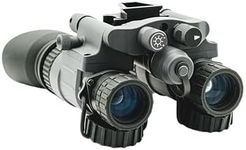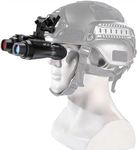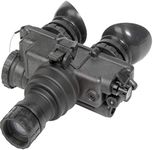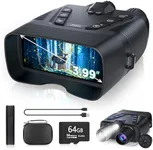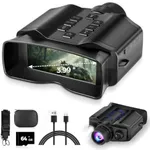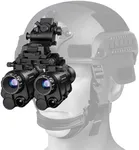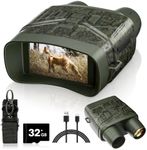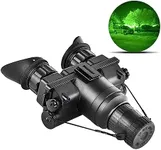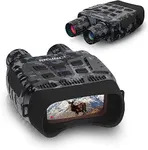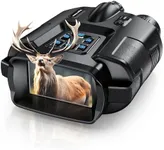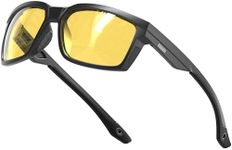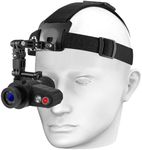Buying Guide for the Best Night Vision Goggles
Choosing the right night vision goggles can be a rewarding process once you understand your intended use and the essential features to look for. Whether you're interested in wildlife observation, camping, security, or hunting, it's important to know how different specifications affect performance. By matching the features of night vision goggles to your specific needs, you can ensure clear vision at night and a comfortable, effective experience.GenerationNight vision technology is divided into different generations (usually Gen 1, Gen 2, and Gen 3), which refer to the age and performance level of the image intensifier tubes inside the goggles. Higher generations provide brighter, clearer images and better performance in low-light conditions but also tend to be more expensive. For casual use like camping or mild wildlife spotting, Gen 1 might be sufficient. If you require sharper images and enhanced clarity for security or professional observation, consider Gen 2 or above. Evaluate your activities: if you’re often in almost complete darkness or need to see finer details, opting for a higher generation will be more rewarding.
ResolutionResolution tells you how sharp and detailed the image looks through the goggles, generally measured in lines per millimeter (lp/mm). Higher resolution means a clearer picture, making it easier to distinguish objects or movement at a distance. Basic models might have lower resolution, showing grainier images that could be manageable for very casual use. Higher resolution is necessary if you’re expecting to spot small animals, identify people, or see details at longer ranges. Think about how sharp the image needs to be for your planned activities, and aim for the highest resolution you can reasonably justify.
Field of ViewField of view (FOV) is the width of the area you can see through the goggles without moving your head. A wide field of view allows you to observe more of your surroundings at once, which is helpful for exploring or scanning large areas. Narrower FOV models let you see further in one direction but less around you at once. Use needs guide your choice—the wider FOV is better for surveillance or walking around at night, whereas a narrower FOV is suitable if you only need to focus on a specific point or target.
RangeRange refers to the distance at which the goggles can clearly identify objects in the dark. Short-range models are suitable for close-up activities, like hiking or camping. Medium or long-range devices are needed for hunting, surveillance, or navigation across open land. Consider where and how you’ll use the goggles—think about whether you need to see just a few meters ahead or far across a field or forest.
Infrared IlluminatorSome goggles come with an integrated infrared (IR) illuminator, which acts like a flashlight invisible to the human eye and enhances visibility in total darkness. This is especially important if you expect to use the goggles where there’s absolutely no light, like deep forests or caves. If you plan to use night vision in varied lighting conditions, check for adjustable or built-in IR. For use in slightly moonlit or urban areas, you might not need a strong IR source.
Weight and ComfortNight vision goggles are often worn for extended periods, so their weight and how comfortably they fit matter a lot. Heavier units can cause neck fatigue, especially if worn on a head strap or helmet. Lighter, ergonomic models are more pleasant for long-term use but might compromise some features. If you’ll be moving around a lot or wearing them for long stretches, prioritize lighter weight and comfortable straps.
Power SourceNight vision goggles require batteries or rechargeable power packs. It’s important to check how long the device can operate before needing a recharge or battery change. If you’ll be out for many hours or overnight, look for units with longer battery life or easily replaceable batteries. Think about your typical outings—will you have access to spares or recharging options, or do you need a model that lasts as long as possible on a single power source?
Weather ResistanceIf you’ll be using night vision goggles outdoors, especially in unpredictable weather, make sure the unit is water-resistant or waterproof. This protects against rain, fog, and dust. For mostly indoor or fair-weather use, higher weather resistance might not be crucial, but for hunting, camping, or hiking, it’s a key factor for durability and continued performance.

